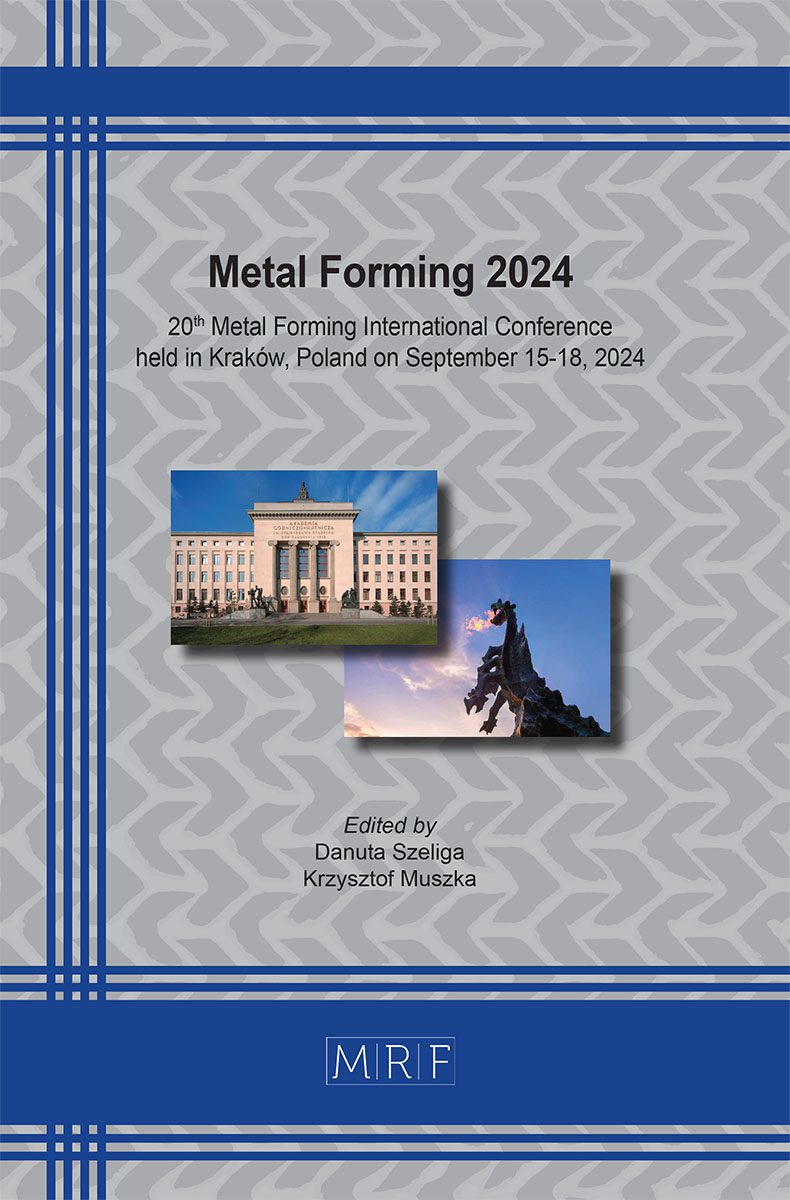–
Roll pass design for round and square sections using an informed artificial neural network
OVERHAGEN Christian, MARTIN Robert
download PDFAbstract. Nowadays, the roll pass design process for hot rolling mills of full sections like round and square sections is carried out by FEM simulations or analytical calculations. Both techniques require a highly iterative method with numerous iterations required to determine a satisfying pass design solution. In the present work, a neural network is trained for the process of roll pass design for round and square sections. The steps of data generation and training are combined by the formulation of a custom loss function for the underlying physical problem. In this way, the neural network is informed about the metal forming problem, enabling the generation of the necessary training data to be carried out implicitly during training. This technique increases the flexibility and extensibility of the current approach, eliminating the necessity of external training data generation. The metal forming equations for the pass design problem are presented for the pass sequences round-oval-round, as well as square-diamond-square, which are included in custom loss functions for the neural networks. The prediction results are compared to analytical iterative calculations, indicating very good agreements. Therefore, multiple iterations and computation time can be saved when the new approach of pass design is applied.
Keywords
Rod Rolling, Bar Rolling, Neural Networks, Roll Pass Design, Machine Learning, Custom Loss Function
Published online 9/15/2024, 12 pages
Copyright © 2024 by the author(s)
Published under license by Materials Research Forum LLC., Millersville PA, USA
Citation: OVERHAGEN Christian, MARTIN Robert, Roll pass design for round and square sections using an informed artificial neural network, Materials Research Proceedings, Vol. 44, pp 444-455, 2024
DOI: https://doi.org/10.21741/9781644903254-48
The article was published as article 48 of the book Metal Forming 2024
![]() Content from this work may be used under the terms of the Creative Commons Attribution 3.0 license. Any further distribution of this work must maintain attribution to the author(s) and the title of the work, journal citation and DOI.
Content from this work may be used under the terms of the Creative Commons Attribution 3.0 license. Any further distribution of this work must maintain attribution to the author(s) and the title of the work, journal citation and DOI.
References
[1] K. Slimani, M. Zaaf, T. Balan, Accurate surrogate models for the flat rolling process, Int. J. Mater. Form. 16 (2023) 23. https://doi.org/10.1007/s12289-023-01744-5
[2] C. Overhagen, K. Fu, Data-Driven Roll Pass Design of Wire Rod Mills, Key Eng. Mater. 926 (2022) 589-601. https://dx.doi.org/10.4028/p-dwm928
[3] A. Paszke, S. Gross, F. Massa, A. Lerer, J. Bradbury, G. Chanan, T. Killeen, Z. Lin, N. Gimelshein, L. Antiga, A. Desmaison, A. Köpf, E. Yang, Z. DeVito, M. Raison, A. Tejani, S. Chilamkurthy, B. Steiner, L. Fang, J. Bai, S. Chintala, PyTorch: An Imperative Style, High-Performance Deep Learning Library, arXiv: 1912.01703v1. https://doi.org/10.48550/arXiv.1912.01703
[4] D.P. Kingma, J. Ba, Adam: A Method for Stochastic Optimization, arXiv: 1412.6980v9. https://doi.org/10.48550/arXiv.1412.6980
[5] M.J. Roux: Etude sur le phenomene de l’elargissement dans les laminoirs, Revue de metallurgie 36 (1939).
[6] P.J. Mauk, R. Kopp, Spread under Hot Rolling, The roll pass designer 37 (39) 3-68.
[7] A.E. Lendl, Rolled bars – part I, Iron and Steel 21 (14) 397-402.
[8] C. Overhagen, Numerical assessment of interstand tensions in continuous hot rolling processes of flat and long products, Int. J. Adv. Manuf. Tech. 127 (2023) 4677-4696. https://doi.org/10.1007/s00170-023-11584-x












